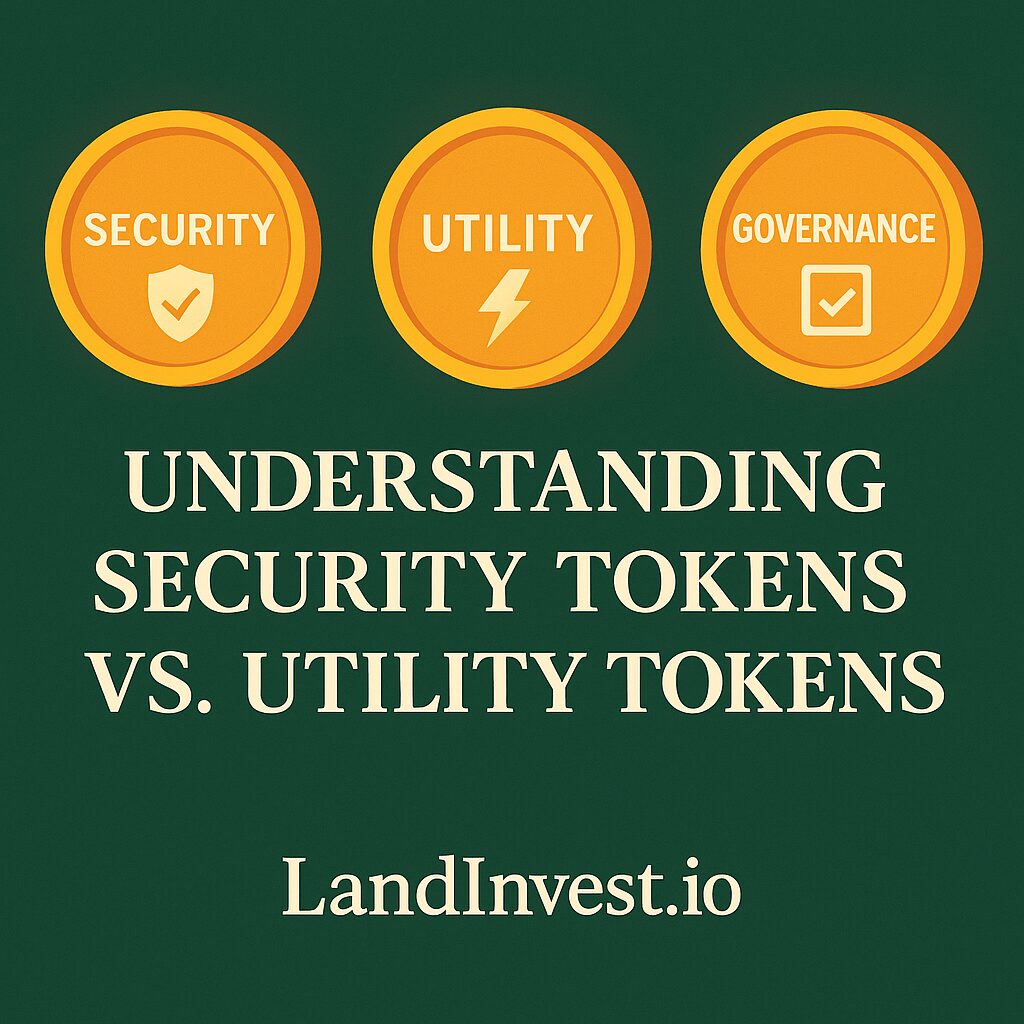The Evolution of Digital Assets
As blockchain technology continues to reshape global finance, the lines between different types of tokens—security, utility, and governance—can often seem blurred. Yet, understanding these distinctions is critical for investors, developers, and regulators alike. Each token type serves a unique role within the digital economy, with varying implications for ownership, compliance, and value.
What Are Security Tokens?
Security tokens represent ownership or a stake in a real-world asset or company. They are backed by tangible value—such as shares, land, or revenue streams—and are regulated under securities laws. These tokens function much like traditional financial instruments, but they exist on the blockchain.
A perfect example is the $PRPTY token from LandInvest.io, which provides fractional equity in Land Invest Corp and its U.S. land portfolio. Investors holding $PRPTY receive the same rights and profit participation as traditional shareholders, making it a true security token backed by real assets.
What Are Utility Tokens?
Utility tokens are designed to grant access to a product or service within a blockchain ecosystem. Unlike security tokens, they do not represent ownership, profits, or dividends. Instead, they are used as a means of exchange within a network—think of them like digital ‘access passes.’
For example, a token used to pay transaction fees or unlock platform features is a utility token. While they can have market value, their primary purpose is functional, not financial.
The Compliance Divide
The biggest difference between security and utility tokens lies in their regulatory treatment. Security tokens must comply with strict securities laws, including investor verification (KYC/AML), disclosure requirements, and transfer restrictions. This makes them ideal for institutional and compliant investment platforms like LandInvest.io.
Utility tokens, on the other hand, are generally unregulated, as long as they are not marketed or used as investment products. However, when utility tokens begin to resemble profit-bearing assets, they risk crossing into security territory—a violation of the Howey Test that regulators monitor closely.
Why Compliance Matters for Investors
In the evolving landscape of tokenized assets, compliance ensures sustainability. Security tokens like $PRPTY are built to last because they align with legal frameworks, protect investors, and attract institutional capital. By contrast, unregulated tokens face potential legal risks and long-term instability.
For investors seeking real ownership and long-term value, compliance isn’t a limitation—it’s a safeguard.
The Bottom Line
Security tokens and utility tokens both play essential roles in the blockchain ecosystem. But for those looking to participate in regulated, equity-based opportunities tied to tangible assets, security tokens represent the future of investing.
LandInvest.io’s $PRPTY token bridges the gap between traditional ownership and digital innovation—offering real assets, real compliance, and real returns.
📅 Seed Round Launch: November 3, 2025
🔗 Learn more at LandInvest.io

